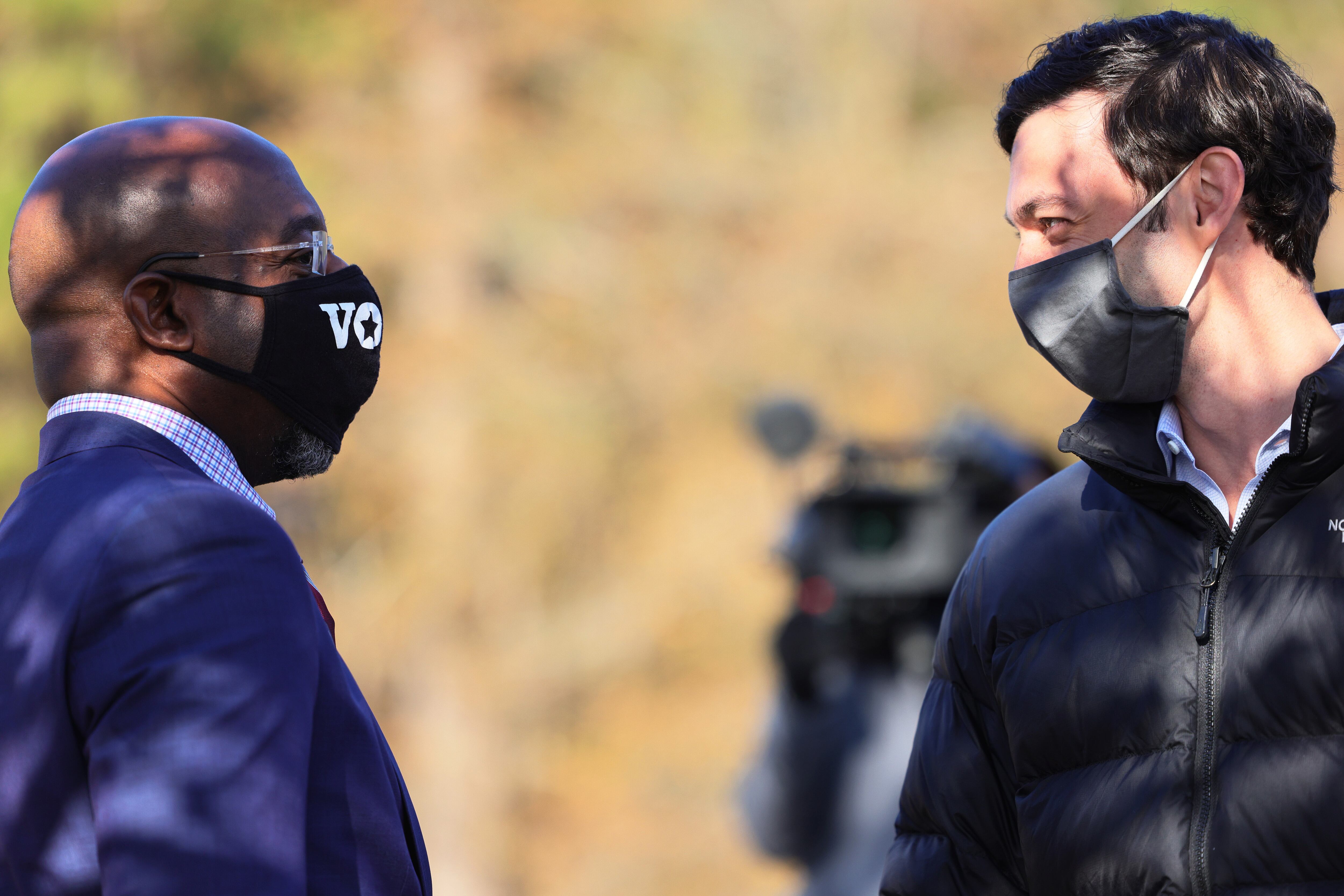After Congress passed a $900 billion stimulus package in December, President-elect Joe Biden called it a “down payment.”
So did Becky Pringle, president of the nation’s largest teachers union. The money was a start, they said, but not everything schools or the economy needed to recover from the coronavirus pandemic.
Neither mentioned the awkward reality at the time: there was no guarantee that any more money was forthcoming. If Republicans held onto control of the Senate, those plans might have run into the buzzsaw of opposition that had limited ambitious COVID relief proposals floated by Democrats throughout last year.
Then last week, Democrats in Georgia won two Senate runoffs, and with them, unified control of Congress and the presidency. That shift still doesn’t guarantee more money is coming for schools — but it makes it a whole lot more likely.
“What is Biden going to be able to do in a COVID response now that he has a Democratic Senate? Actually put forward a serious dollar amount,” said Noelle Ellerson Ng of AASA, the national school superintendents association, which is among the groups pushing for more money. “That’s a huge difference that comes with a Democratic Senate.”
An additional round of aid could have a big impact on schools’ ability to help students close academic gaps with initiatives like tutoring or longer school days.
Last March, Congress provided $13 billion in relief money for schools. In December, lawmakers added another $54 billion. That’s a lot of money — for context, the federal government usually spends $60 billion a year on K-12 education.
But advocates say schools still need substantially more. For one thing, a pandemic-fueled recession has hit the state tax revenue that funds schools, which means budget cuts could still be coming.
“States and localities under financial strain because of the pandemic will be cutting local funding because they have to balance their budgets,” Democratic Rep. Bobby Scott, chair of the house education committee, recently told Education Week. “And education will obviously be adversely affected.”
Democrats had pushed for aid to state and city governments to plug funding gaps, but that wasn’t included in the December package amid Republican opposition. With Democrats in control, there is a much clearer path for relief for state and local governments, which Biden and even some Republicans support.
“We are fighting for state and local,” said Randi Weingarten, president of the American Federation of Teachers. “I’m optimistic.”
Congress could also allocate money specifically to address learning loss. Studies show that many students had fallen behind academically by the start of this school year, and those gaps may be growing as many students continue to learn remotely.
Schools can use some of their $54 billion to address learning loss. But those efforts can be expensive. A recent estimate found that providing small-group tutoring to every student in the country would itself cost about $50 billion.
“I hope there is a pot of money specifically for addressing children’s needs in the aftermath of COVID,” said Weingarten.
Public school groups and their allies have sought more money earmarked for schools directly. Sen. Patty Murray, set to become chair of the Senate education committee, had proposed $175 billion prior to the December package.
Biden, for his part, has been clear that he wants more relief, including for schools and for states. “We need urgent action on what comes next, because the COVID-19 crisis hits red states and blue states alike,” he said in a statement in response to the Georgia results.
The Washington Post reported Friday that Biden is working on another stimulus proposal that would include money to prop up state governments, some of which could be earmarked for education.
Whether any of this will actually happens — and how additional money is divvied up — remains to be seen. Democrats have a small majority in the House and the thinnest majority in the Senate, which is evenly divided, leaving Vice President–elect Kamala Harris as the tie-breaking vote.
There’s also certain to be debate over how much money schools truly need.
While advocacy groups argue that massive sums are necessary, state budget shortfalls have not been nearly as bad as some initially feared, and many school districts that have kept buildings closed have been able to save money.
Meanwhile, many of Biden’s other education ideas involve spending more money, and are also likely to get friendlier receptions from a Democratic Congress.
During the campaign, his signature education proposal was to triple Title I funding, which goes to high-poverty schools. Biden has also talked about including schools in a large infrastructure bill. Deteriorating school facilities, and poor ventilation in particular, have drawn increased scrutiny during the pandemic.
Unlikely to get much attention in the new Congress: private school vouchers or charter schools. The federal government doesn’t play a major role on either topic, and unlike outgoing Secretary of Education Betsy DeVos, Biden’s pick Miguel Cardona is almost certain not to prioritize school choice issues. (Also of note: A Democratic Senate means Cardona now has an easier path to confirmation.)
Still, one thing that will come up is funding for a federal program that awards grants to help charter schools start up. House Democrats have previously proposed reducing that fund, although the most recent allocation kept it flat. Democrats are internally divided about charter schools.
“A lot of our Democratic friends are supportive but not as out front as we need them to be,” Ron Rice of the National Alliance for Public Charter Schools said after the November election.






